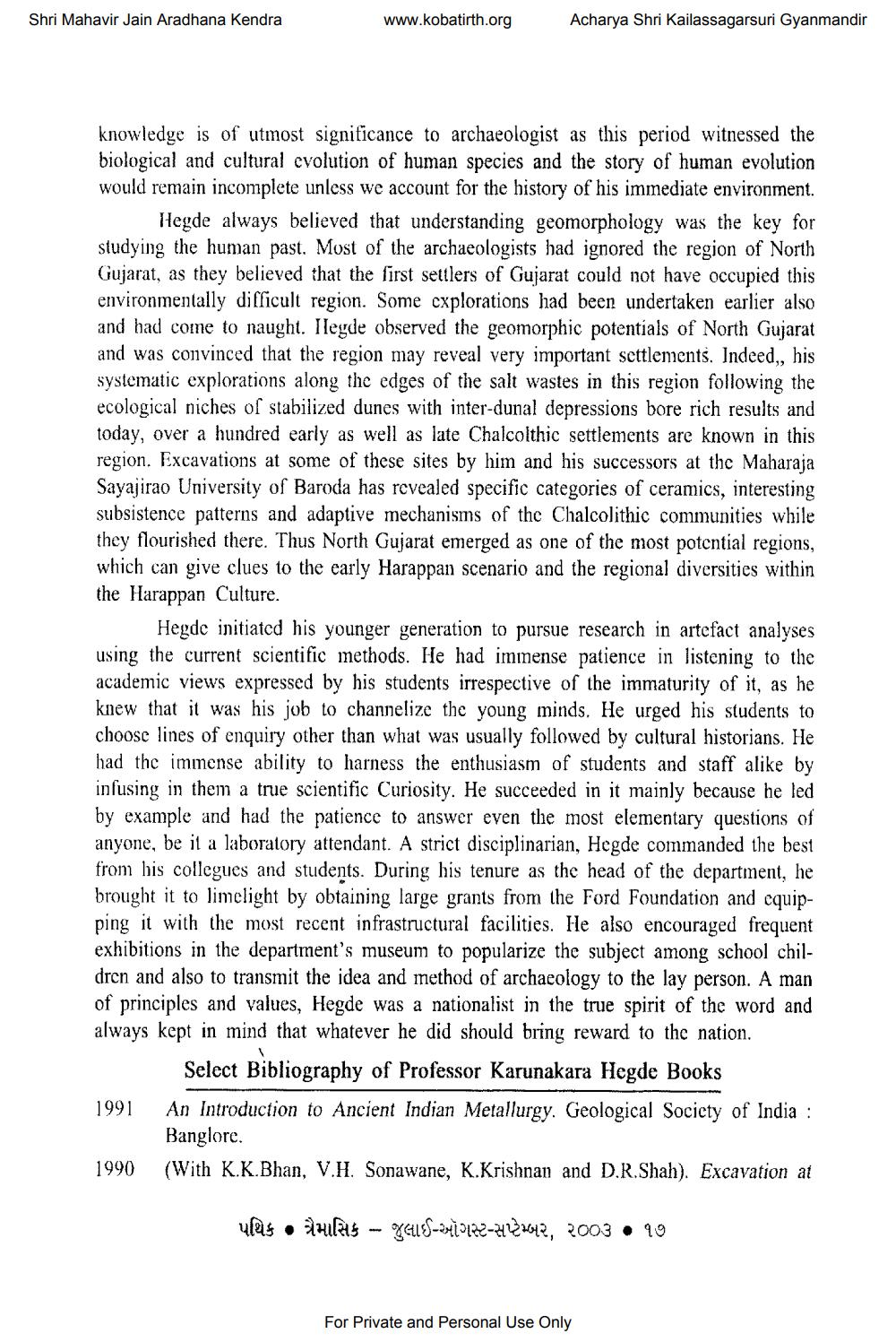________________
Shri Mahavir Jain Aradhana Kendra
www.kobatirth.org
Acharya Shri Kailassagarsuri Gyanmandir
knowledge is of utmost significance to archaeologist as this period witnessed the biological and cultural evolution of human species and the story of human evolution would remain incomplete unless we account for the history of his immediate environment.
Hegde always believed that understanding geomorphology was the key for studying the human past. Most of the archaeologists had ignored the region of North Gujarat, as they believed that the first settlers of Gujarat could not have occupied this environmentally difficult region. Some explorations had been undertaken earlier also and had come to naught. Heyde observed the geomorphic potentials of North Gujarat and was convinced that the region may reveal very important settlements. Indeed,, his systematic explorations along the edges of the salt wastes in this region following the ecological niches of stabilized dunes with inter-dunal depressions bore rich results and today, over a hundred early as well as late Chalcolthic settlements are known in this region. Excavations at some of these sites by him and his successors at the Maharaja Sayajirao University of Baroda has revealed specific categories of ceramics, interesting subsistence patterns and adaptive mechanisms of the Chalcolithic communities while they flourished there. Thus North Gujarat emerged as one of the most potential regions, which can give clues to the early Harappan scenario and the regional diversities within the Harappan Culture.
Hegde initiated his younger generation to pursue research in artefact analyses using the current scientific methods. He had immense patience in listening to the academic views expressed by his students irrespective of the immaturity of it, as he knew that it was his job to channelize the young minds. He urged his students to choose lines of enquiry other than what was usually followed by cultural historians. He had the immense ability to harness the enthusiasm of students and staff alike by infusing in them a true scientific Curiosity. He succeeded in it mainly because he led by example and had the patience to answer even the most elementary questions of anyone, be it a laboratory attendant. A strict disciplinarian, Hegde commanded the best from his collegues and students. During his tenure as the head of the department, he brought it to limelight by obtaining large grants from the Ford Foundation and equipping it with the most recent infrastructural facilities. He also encouraged frequent exhibitions in the department's museum to popularize the subject among school children and also to transmit the idea and method of archaeology to the lay person. A man of principles and values, Hegde was a nationalist in the true spirit of the word and always kept in mind that whatever he did should bring reward to the nation.
Select Bibliography of Professor Karunakara Hegde Books 1991 An Introduction to Ancient Indian Metallurgy. Geological Society of India :
Banglore. 1990 (With K.K.Bhan, V.H. Sonawane, K.Krishnan and D.R.Shah). Excavation at
ulas •
Hills - 249-2410122-77122042, 2003 • 19
For Private and Personal Use Only




